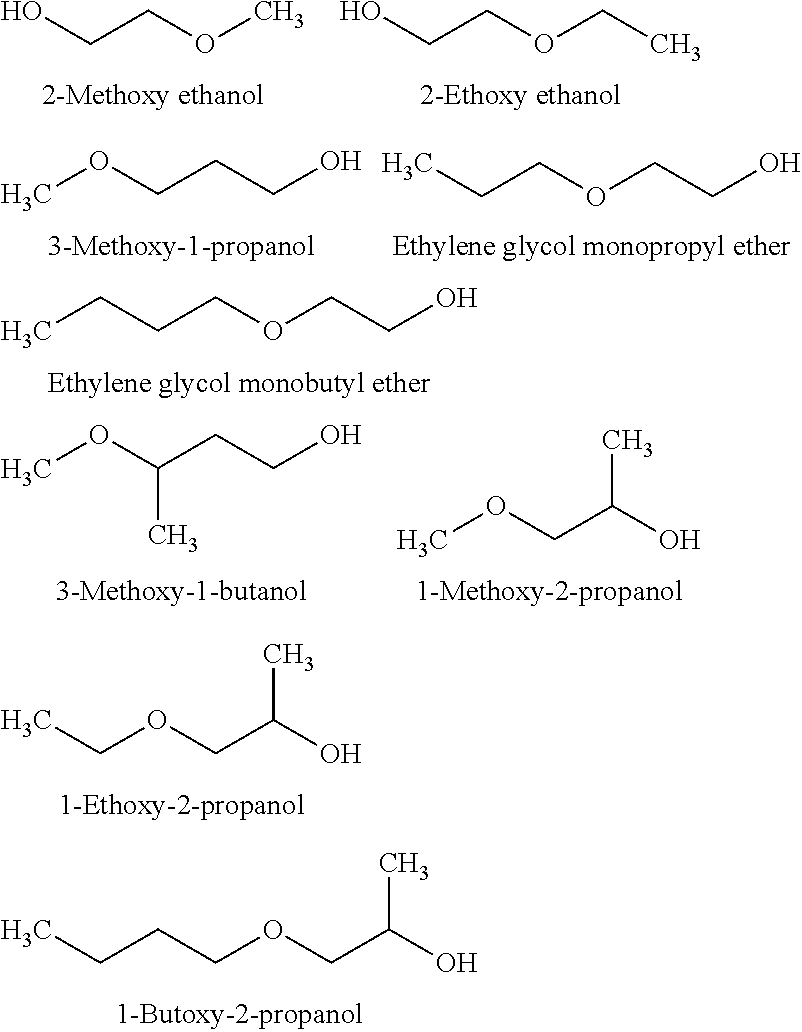Conductive polymer composition
a polymer composition and polymer technology, applied in the direction of non-metal conductors, conductors, other domestic objects, etc., can solve the problems of poor pot life, decreased workability and yield, etc., and achieve the effects of reducing weight, workability and yield, and increasing viscosity of solution
- Summary
- Abstract
- Description
- Claims
- Application Information
AI Technical Summary
Benefits of technology
Problems solved by technology
Method used
Image
Examples
production example 1
Production of Polyaniline Composite
[0193]A solution obtained by dissolving 37.8 g of Aerosol OT (sodium di-2-ethylhexylsulfosuccinate and 1.47 g of Sorbon T-20 that is a non-ionic emulsifier having a polyoxyethylene sorbitan aliphatic acid ester structure (manufactured by Toho Chemical Industry Co., Ltd.) in 600 mL of toluene was put in a 6 L-separable flask in the flow of nitrogen. Further, 22.2 g of aniline was added to this solution. Thereafter, 1800 mL of 1M phosphoric acid was added to the solution. The temperature of the solution having two liquid phases, i.e. toluene and water, was lowered to 5° C.
[0194]When the internal temperature of the solution reached 5° C., the solution was stirred at 390 rpm. A solution prepared by dissolving 65.7 g of ammonium persulfate in 600 mL of 1M phosphoric acid was added dropwise for 2 hours by using a dropping funnel. For 18 hours after the start of the dropwise addition, the reaction was conducted while keeping the internal temperature of th...
example 1
[0196]3.5 g of 3-methoxy-1-butanol as the solvent (manufactured by Wako Pure Chemical Industries, Ltd.), 3.5 g of ethylene glycol mono-tert-butyl ether (manufactured by Tokyo Chemical Industry Co., Ltd.) and 3 g of p-tert-amylphenol (manufactured by Wako Pure Chemical Industries, Ltd.) as a phenolic compound were mixed and stirred until the mixture became homogeneous. To 9.9 g of the resulting mixed solvent, 0.1 g of the polyaniline / AOT composite obtained in Production Example 1 was added, and stirred and mixed. After mixing by stirring, insoluble matters were removed by means of 5 C filter paper, whereby a polyaniline / AOT composite (conductive polymer composition) solution was prepared.
[0197]To this solution, 0.0165 g of 2-naphthalenesulfonic acid hydrate (manufactured by Tokyo Chemical Industry Co., Ltd.) was added, and the resultant was stirred at 30° C. for 30 minutes. Thereafter, the solution was put in a stainless-made container, and stored in a nitrogen-replaced glove box.
[01...
example 2
[0210]A polyaniline / AOT composite solution was prepared and evaluated in the same manner as in Example 1, except that the mixed solvent was prepared by using 4 g of 3-methoxy-1-butanol (manufactured by Wako Pure Chemical Industries, Ltd.), 2 g of p-tert-amylphenol (manufactured by Wako Pure Chemical Industries, Ltd.) and 4 g of ethylene glycol mono-tert-butyl ether (manufactured by Tokyo Chemical Industry, Co., Ltd.). The results are shown in Table 1.
PUM
| Property | Measurement | Unit |
|---|---|---|
| molecular weight distribution | aaaaa | aaaaa |
| molecular weight distribution | aaaaa | aaaaa |
| temperature | aaaaa | aaaaa |
Abstract
Description
Claims
Application Information
 Login to View More
Login to View More - R&D
- Intellectual Property
- Life Sciences
- Materials
- Tech Scout
- Unparalleled Data Quality
- Higher Quality Content
- 60% Fewer Hallucinations
Browse by: Latest US Patents, China's latest patents, Technical Efficacy Thesaurus, Application Domain, Technology Topic, Popular Technical Reports.
© 2025 PatSnap. All rights reserved.Legal|Privacy policy|Modern Slavery Act Transparency Statement|Sitemap|About US| Contact US: help@patsnap.com



